We Moved!
Mar 02, 2021
The new NC DNA Day Blog is now here (http://ncdnadayblog.org/). All existing and future posts (after today March 2, 2021) will be found at that address. We hope you enjoy the new website!

The new NC DNA Day Blog is now here (http://ncdnadayblog.org/). All existing and future posts (after today March 2, 2021) will be found at that address. We hope you enjoy the new website!
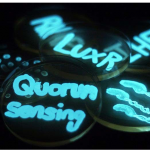
By Katie Acken Quorum sensing (Noun. /KWORE-rum SEN-sing/) What does it mean? Quorum sensing is how bacteria communicate with each other. Bacteria produce quorum sensing molecules, also called autoinducers, and secrete them into the surrounding environment. As bacteria continue to multiply, quorum sensing molecules accumulate in their surroundings. Once the quorum sensing molecules are concentrated […]
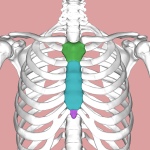
By Emma Goldberg Xiph·oid proc·ess (noun. /ZEYE-foid PRAH-sehs/) What does it mean? The sternum is divided into three segments: the manubrium, body and xiphoid process. The xyphoid process is the lowest segment of the sternum. It is small and cartilaginous, meaning it’s made out of dense connective tissue. In the picture below, it is highlighted […]
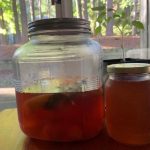
By Riya Gohil One COVID/quarantine hobby I’ve picked up over the course of the last year has been brewing kombucha. To my surprise, it’s a very simple process (for us humans). Once you start your first brew, you can brew as many brews as your heart desires. What is Kombucha? Kombucha is a fermented tea […]

By Regina Fernandez Fun Rating: Difficulty Rating:Image from Biorender What is a lipid? Lipids are organic hydrophobic molecules that do not mix well with water. Some examples of lipids include fats, phospholipids, and cholesterol, which are found in food and in living organisms. Lipids in our body are used to produce and store energy, are […]
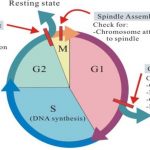
By Mohamed Mahmoud Have you ever wondered how cells grow, divide? Or how these processes are controlled? In this article, we are taking you through a tour that will answer all of your questions. The human body contains about 37.2 trillion cells. All of these cells are derived from only one fertilized egg. The development of […]

By Michelle Chamberlain Today, humans rely on oxygen to survive, but for the first half of our planet’s history oxygen was scarce. The Earth is approximately 4.54 billion years old and its first life-forms emerged as early as 3.77 billion years ago as single-celled microorganisms. Because these microbes evolved in an anoxic environment, they were […]
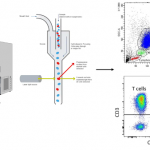
Flow Cytometry By: Carolina A. Herrera Difficulty Rating: What is the general purpose? Flow cytometry is a technique used to count and analyze the size, shape, and properties of individual cells within a heterogenous (mixed) population of cells. In flow cytometry, cells are tagged with antibodies which are proteins produced by immune cells, cells that […]
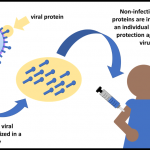
By Taylor Tibbs Vaccine (noun, /vak-SEEN/) What does it mean? A vaccine is a biological product used to protect or immunize against a certain disease. When vaccines are given, they stimulate the immune system to develop a protective response against the causative agent of a disease or pathogen (such as a virus). Vaccines can be […]
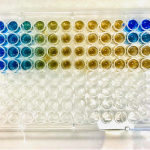
By Madison Williams Bradford Protein Assay What is the general purpose? A Bradford Protein Assay detects protein concentrations in a sample solution based on the color change of the dye used. Why do we use it? This technique is used to determine the amount of protein found in a protein sample. One reason you might […]
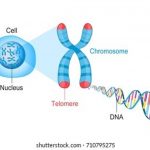
By Rami Major Telomere (noun. /TEE-luh-mere/) What does it mean? Our DNA is packaged and tightly wrapped up in chromosomes. To prevent our chromosomes from unraveling and to protect DNA from damage, chromosomes are capped by telomeres. Telomeres consists of repetitive DNA sequences that match up with special proteins. How do I use it in […]
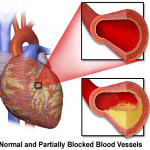
By Zoe Terwilliger Ischemia Noun. / ih-SKEE-mee-uh/ What does it mean? Ischemia is a decrease in blood supply to an organ or tissue. Because red blood cells are responsible for transporting oxygen throughout the body, less blood flow also means less oxygen being delivered to tissues. This lack of oxygen prevents the body’s cells from […]
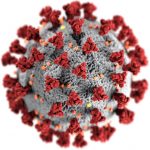
By Nicole Gadda Have you ever wondered why antibiotics treat strep throat, but not a bad case of the flu? At first glance, bacteria and viruses certainly seem very similar. After all, they’re both pathogens, which means they both can cause disease. So, how can doctors tell if your sore throat is due to a […]

By Emma Goldberg Gloomy octopuses, also known as Common Sydney Octopus, have traditionally been thought of as loners. Until recently, scientists believed these ocean critters, who live on the rocky shores of Eastern Australia and Northern New Zealand, only interacted with each other to mate once per year. Soyou can imagine how surprised marine biologist […]

By Riya Gohil Nucleosome (Noun. /NEW-klee-uh-sohm/) What does it mean? A nucleosome is a unit of eight proteins (called histones) that DNA wraps around, like how thread wraps around a spool. If you stretch out the DNA inside a single human cell, DNA would be about 6 feet long! That’s a lot of DNA that […]
By Whitney Bell Malignant (adjective. /mal-IG-nant/) What does it mean? In science, the word “malignant” can be defined as cancerous. This word is often used to describe tumors whose cells are abnormal, invasive, fast-growing, and have the ability to metastasize (spread) to other parts of the body and cause life-threatening disease. How do I use […]

By Sean Gay You look up at the clock, then at your calculus teacher. After listening for what feels like hours, you look back at the clock. It has only been one minute. You feel your eyes get heavy and you slouch in your chair, only to be awakened by your teacher asking you to […]

By Mohamed Nasr Have you ever wondered what could happen if there were several exact copies of yourself? What would life be like if every biological entity had several exact copies somewhere in the world? If these copies are genetically identical, they are called clones, and the process by which these identical copies are made […]

By Devina Thiono Animals, and nature in general, have been able to withstand various conditions without much help. Each creature has adapted in such a way that they are able to function seamlessly where they live. This quality is what inspired the field of biomimicry. Biomimicry is the practice of studying organisms throughout nature and […]

By Alec Chaves Syncytium (noun. /sin-SI-she-um/) What does it mean? A syncytium is a collection of subcellular or cellular parts that work together in unison. Etymology The word syncytium is derived from Greek “syn” and “kytos.” Combined, they loosely translate to “together in a box.” How do I use it in a sentence? “The muscle […]

By Rami Major The longest gene in humans is called DMD, which facilitates the production of a protein called dystrophin. Dystrophin plays a role in strengthening both skeletal and cardiac muscle fibers. It is largely responsible for your ability to move and pump blood throughout your body. The DMD gene is considered “X-linked” because it […]
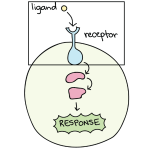
By Seth Veenbaas Ligand (noun. /LIG-uhnd/) What does it mean? In biochemistry, a ligand is a molecule that binds to or sticks on to macromolecules, which are large biological structures in our cells made of protein, DNA, or RNA. Ligands come in all shapes and sizes. Some ligands are small ions made of a single […]

By Madison Williams Do you ever wonder how scientists can predict that parents will pass a disease on to their children? Gregor Mendel, the father of genetics, began this process of understanding genetic traits in the 1800s using pea plants. In this article, you will learn about his life and what led him to making […]

By Natalie Nielsen If anyone has healed from an injury causing a swollen limb or body part, which could benefit from products like those CBD Gummies, then they have witnessed the lymphatic system at work. But what is the lymphatic system, and why do we care about it? The lymphatic system is a vasculature network, […]
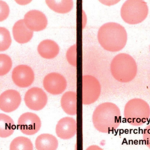
By Mariah Jones Macrocytes (noun. /MAK-row-sites/) What does it mean? A macrocyte is an unusually large red blood cell. Macrocytes area typical sign for a type of anemia, called [pernicious anemia.] A person with this type of anemia will most likely also, have a lack of vitamin B12 and/or folic acid in their system. These […]

By Sarah Lowe Herpetology (Noun./ her-peh-TOLLO-jee/) What does it mean? Zoology is the scientific study of animals. Herpetology is a branch of zoology that studies any type of reptile or amphibian, like lizards and frogs. How do I use it in a sentence? Siblings go to the pond every day after school to observe the […]
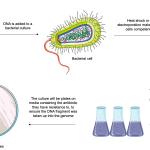
By Nicole Gadda Technique Name: Bacterial Transformation Fun Rating: Transformations get a full 5/5 fun rating from me! The possibilities are truly endless when it comes to transforming DNA into a cell. You can make any combination imaginable! Want your cells to fluoresce bright green? Want your cells to express a super cool protein you just […]
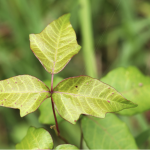
By Jenna Beam Earlier this month, I decided to embark on my first backpacking trip in Congaree National Park in South Carolina (be warned: beautiful, but mosquito central). While walking through the forest, my fellow backpacker pointed out a massive vine of poison ivy… right where I was about to step! And that’s when I […]

By Brandon Le Does life exist outside the confines of our home planet? If this question captivates you, you’d find good company among astrobiologists – multidisciplinary scientists who seek to understand the origins, evolution, and distribution of life beyond Earth. Many astrobiologists agree that the special conditions allowing life to emerge on Earth are rare, […]
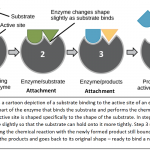
By Zoe Terwilliger Substrate (noun. /SUB-strate/) What does it mean? In biochemistry, a substrate is a molecule that an enzyme acts on. Substrates attach to enzymes and undergo an enzyme-catalyzed chemical reaction to form a new substance: the product. How do I use it in a sentence? ATPases are enzymes that all bind the substrate […]
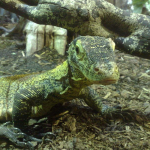
By Priscila Santa Rosa Parthenogenesis (Noun. /par-theh-no-JEH-ne-sis/) What does it mean? Parthenogenesis is a type of asexual reproduction in animals where the egg can develop without being fertilized by a sperm. Parthenogenetic embryos have no father, which means that they have the genetic material only from the mother. Parthenogenesis is a common type of […]

By Whitney Bell Technique Name: Mammalian Cell Culture Difficulty Rating: 4/5 petri dishes depending on the day. Mammalian cell culturing can be simple if you’re using immortalized cell lines (like fast-growing cancer cells; however, can be more difficult and time consuming if you are using primary cells lines to make sure they are not differentiating […]

By Taylor Tibbs It is that time of year again: the morning air is crisp and you can feel a bit of a chill; the summer trees that were once a lush and deep green are beginning to turn into a splendor of reds, yellows, and oranges. This colorful phenomenon seems to occur every year […]

By Emma Goldberg If you’ve ever woken up in the middle of the night and tried to reach for something on your nightstand, you know that it takes your eyes a few minutes to adjust to the darkness. Now, imagine being a fish living in the deepest depths of the ocean – a place where […]

By Carolina A. Herrera Vaccines train your immune system to fight against harmful invading pathogens, which are microorganisms (bacteria, viruses, fungi and parasites) that can cause disease. Vaccines contain dead or weakened pathogens, or distinctive pieces of a pathogen such as proteins or polysaccharides (sugars) that activate the immune system. The immune system is a […]

By Anastacia Wienecke Hemocytometer (noun. /hee-mo-sai-TAA-meh-ter/) What does it mean? One tool that many biological researchers have in their laboratory toolboxes is a hemocytometer. This device is useful for counting the number of cells within a 10 microliter (10 millionths of a liter) volume of liquid. The hemocytometer looks like a thick microscope slide and it […]

By Mohamed Nasr Gram Staining Fun Rating: What is the general purpose? Gram staining is used to differentiate between two large groups of bacteria according to their cell wall structure differences (Figure 1). Why do we use it? Gram staining is an essential technique in the field of microbiology. It is used in a wide […]

By Riya Gohil Alex Stutzman is a third year Ph.D. candidate at the University of North Carolina at Chapel Hill in the Genetics and Molecular Biology Department. Alex is dedicated to her research in the Dowen and McKay labs at UNC, and also to engaging diverse scientists to address the racial injustices that exist in […]
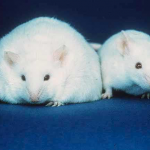
Escrito y traducido por Regina Fernandez Imagina que acabas de terminar de comer un delicioso Bojangles’ famous chicken ‘n biscuits. Un amigo se sienta enseguida de ti y te ofrece un postre. El postre es un pedazo grande de pastel de chocolate servido con dos bolas de nieve de vainilla. ¡Se ve delicioso! Pero te […]

By Regina Fernandez Imagine you just finished eating some delicious Bojangles’ famous chicken ‘n biscuits. Your friend sits next to you and offers a big piece of chocolate cake with two scoops of vanilla ice cream for dessert. Dessert looks delicious!! But you feel full and you don’t feel like eating anymore food. So, you […]

By Alec Chaves If you’ve been following my previous blog posts, you’ll notice I like to talk about skeletal muscle. This is because, in my opinion, skeletal muscle is the coolest and most fascinating organ to study. Not only do skeletal muscles allow you to move, they also release chemicals called cytokines, which communicate with […]

By Rami Major Allele (Noun. /uh-LEEL/) What does it mean? Alleles can be considered versions of a gene, and a single gene can have many alleles. Humans have two alleles for a single gene: one from the mother, and the other from the father. The relationship between the two alleles that you have will influence […]

By Riya Gohil Technique Name: Western Blot Fun Rating: Difficulty Rating: What is the general purpose? Western Blots utilize gel electrophoresis to separate protein by size and use antibodies to detect specific proteins molecules within a mixture of various proteins. Why do we use it? Western Blots are useful to detect the presence and amount of […]

By Nicole Gadda Do you know the story of Typhoid Mary? Mary Mallon, otherwise known as Typhoid Mary, was born in Ireland in 1869 and immigrated to the United States in 1883. Mary worked as a cook and later became infamous for unknowingly spreading typhoid fever to the families she worked for. Typhoid fever is […]

By Zoe Terwilliger Enzyme (noun / ENZ-eye-m) What does it mean? An enzyme is a molecule that “speeds up” the rate of a chemical reaction. Enzymes are a type of protein, so they are made of amino acids like all other proteins. Enzymes take substrates, which are molecules that will undergo reaction to form a […]

By Sean Gay Technique Name: Behavior Assays: The Morris Water Maze [Fun] Rating: On a scale from fun and easy like Bill Nye the Science Guy to difficult for Einstein, the technique is….. One Einstein: The results are difficult to interpret. Four Bill Nyes: The actual experiment is easy to perform and generates loads of data. […]

Por Alexander Gómez-A Aunque el elevador ha estado fuera de servicio por cerca de una semana, Alex, un adulto de 28 años de edad, continúa ubicándose frente a el, presionando el botón y esperando por su llegada. Después de algún tiempo, Alex recuerda que el elevador no está funcionando y usa las escaleras. ¿Por qué […]

By Alexander Gómez-A Although the elevator has been out-of-order for about one-week, Alex, 28, continues standing in front of it, pressing the button, and waiting for it to arrive. Then, after some time, he remembers that the elevator is not working and use the stairs. Why did this happen to Alex? Was he a distracted […]
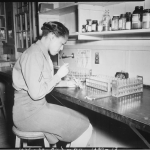
By Katie Acken Lowe Pipette (Noun or verb. /pie-PET/) What does it mean? A pipette is a mechanical instrument used to measure a precise volume of liquid. Once measured, the liquid is then transferred into a tube, beaker or other vessel. There are many different types of pipettes used for specific purposes, such as […]
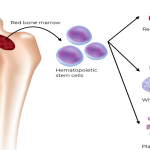
By Sara Lowe Hematopoiesis (Noun. /hee-ma-do-po-EE-sis/.) What does it mean? Hematopoiesis is the process in which a stem cell will develop into any type of new blood cell based on external factors that affect the organism. Stem cells that undergo hematopoiesis are called hematopoietic stem cells. An example that would initiate hematopoiesis would be if […]